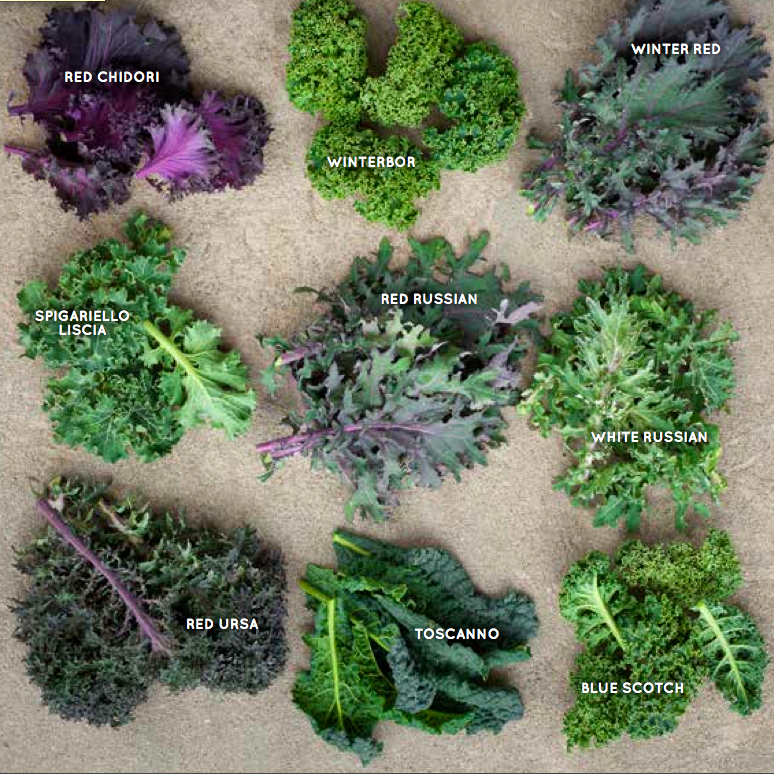|
Kale is a super food. It is a vegetable of the plant species
Brassica oleracea with green or purple leaves, in which the central leaves do
not form a head. It is considered to be closer to wild cabbage than most
domesticated forms of vegetables.
Kale Cultivars: Kales can be classified by leaf type: 1. Curly-leaved (Scots Kale; Blue Curled Kale)
2. Plain-leaved
3. Rape kale
4. Leaf and spear (a cross between curly-leaved
and plain-leaved kale)
5. Cavolo nero (also known as black cabbage,
Tuscan Cabbage, Tuscan Kale) 
Kale Origins: Until the end of the Middle Ages, kale was one
of the most common green vegetables in Europe. Curly-leaved varieties of
cabbage already existed along with flat-leaved varieties in Greece in the
fourth century BC. These forms, which
were referred to by the Romans as Sabellian kale, are considered to be the
ancestors of modern kales. Today one may differentiate between varieties
according to the low, intermediate, or high length of the stem, with varying
leaf types. The leaf colors range from light green through green, dark green
and violet-green to violet-brown.
Kale Nutrition: One
cup of chopped kale has 134 percent of your recommended daily intake of vitamin
C, while a medium orange fruit has 113 percent of the daily C requirement. Kale is very high in beta carotene, vitamin K,
and vitamin C, and is rich in calcium. Kale
is a great source of alpha-linoleic acid (ALA), the omega-3 fatty acid that's
essential for brain health, reduces Type 2 diabetes risk and boosts heart
health. Kale is a source of two carotenoids (beta-carotene is also a
carotenoid), lutein and zeaxanthin. Kale
has 133 percent of a person's daily vitamin A requirement -- more than any
other leafy green. Kale, as with
broccoli and other brassicas, contains sulforaphane (particularly when chopped
or minced), a chemical with potent anti-cancer properties.
Boiling decreases the level of sulforaphane; however,
steaming, microwaving, or stir frying does not result in significant loss.[12]
Along with other brassica vegetables, kale is also a source of
indole-3-carbinol, a chemical which boosts DNA repair in cells and appears to
block the growth of cancer cells.[13][14] Kale has been found to contain a
group of resins known as bile acid sequestrants, which have been shown to lower
cholesterol and decrease absorption of dietary fat.[15] Steaming significantly
increases these bile acid binding properties.[16]
Kale Culinary Uses: Kale
freezes well and tastes sweeter and more flavorful after being exposed to a
frost. Tender kale greens can provide an intense addition to salads,
particularly when combined with other such strongly flavored ingredients When
combined with oils or lemon juice, kale's flavor is noticeably reduced. When
baked or dehydrated, kale takes on a consistency similar to that of a potato
chip. Curly kale varieties are usually preferred for chips. The chips can be
seasoned with salt or other spices.
|